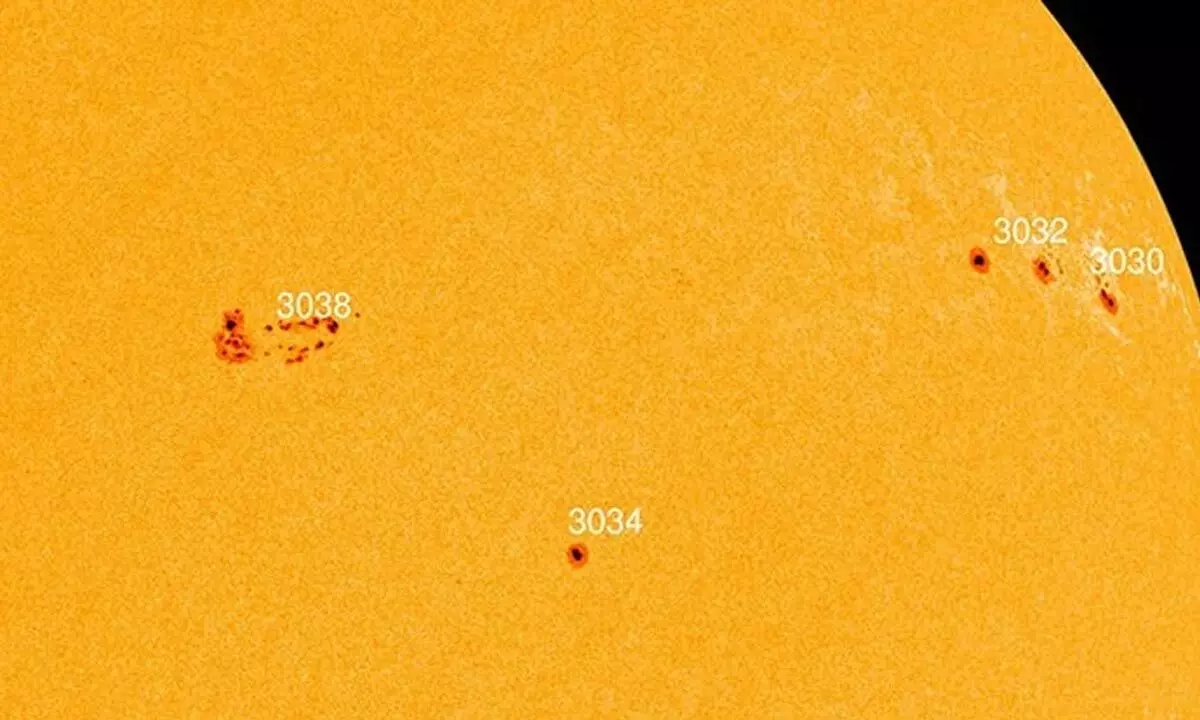Massive Sunspot Has Grown To Be Twice The Size Of Earth

Massive Sunspot Has Grown To Be Twice The Size Of Earth (Photo/sciencealert)
- A huge sunspot that is directly facing us has grown to be twice the size of Earth and its width has doubled in just 24 hours.
- Dark areas on the Sun's surface known as sunspots are where strong magnetic fields, produced by the transport of electric charges from the Sun's plasma
A huge sunspot that is directly facing us has grown to be twice the size of Earth and its width has doubled in just 24 hours. According to sources, a website that tracks news about solar flares, geomagnetic storms, and other cosmic weather events, the sunspot, known as AR3038, grew to 2.5 times the size of Earth between Sunday, June 19 and Monday night, June 20. This made the sunspot approximately 19,800 miles, or 31,900 kilometres, in diameter.
Dark areas on the Sun's surface known as sunspots are where strong magnetic fields, produced by the transport of electric charges from the Sun's plasma, knot before abruptly snapping. The energy that is released as a result causes coronal mass ejections, which are explosive jets of solar material, and solar flares, which are radiation bursts.
The X-rays and ultraviolet light from a solar flare that strikes Earth's upper atmosphere ionise atoms, preventing high-frequency radio signals from reflecting off of them and causing a "radio blackout." During a flare, radio blackouts can be heard over the Sun-lit regions of Earth; these blackouts are rated from R1 to R5 depending on their severity.
According to recent sources, two solar flares in April and May induced R3 blackouts over the Atlantic Ocean, Australia, and Asia. Solar flares typically travel 93 million miles in average distance yet only take 8 minutes to reach us since they travel at the speed of light.
Earth will continue to be in AR3038's sights for a few more days because it is currently just over halfway across and is located somewhat to the north of the Sun's equator. The enormous sunspot is less terrifying than it might appear despite its dangerously rapid expansion.
According to a blog post by the European Space Agency, the flares it will likely produce include M-class solar flares and small radiation storms, which usually induce brief radio blackouts that affect Earth's polar regions.
The most frequent kind of solar flare is an M-class flare. Large X-class flares that have the potential to create high-frequency blackouts on the side of Earth that is exposed to the flare do occur on occasion, but they are much less common than smaller solar outbursts.
Meanwhile, solar material can potentially belch from sunspots. The barrage of solar debris from CMEs is received by the magnetic fields of planets with strong magnetic fields, like Earth, and this results in violent geomagnetic storms.
Furthermore, these storms cause waves of extremely energetic particles to slightly compress Earth's magnetic field. These waves then trickle down magnetic-field lines near the poles, agitating molecules in the atmosphere and releasing energy in the form of light to produce vibrant auroras in the night sky.
As per the previous report, the motion of these electrically charged particles has the power to significantly alter the magnetic field of our planet and even send satellites hurtling toward Earth. Extreme geomagnetic storms have also been predicted to have the potential to completely shut down the internet.














